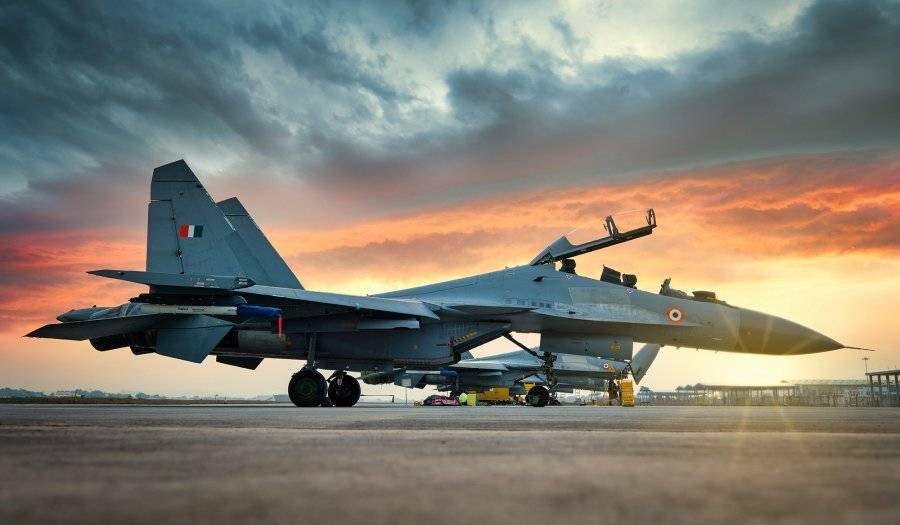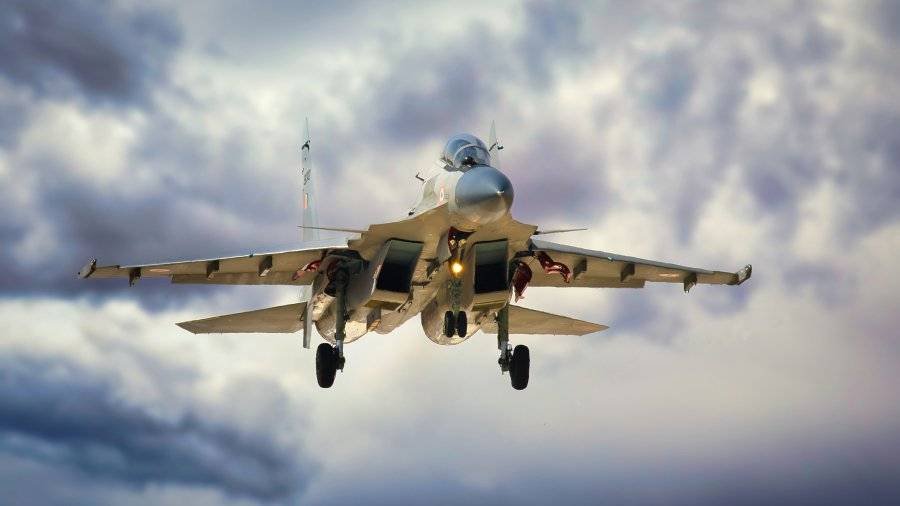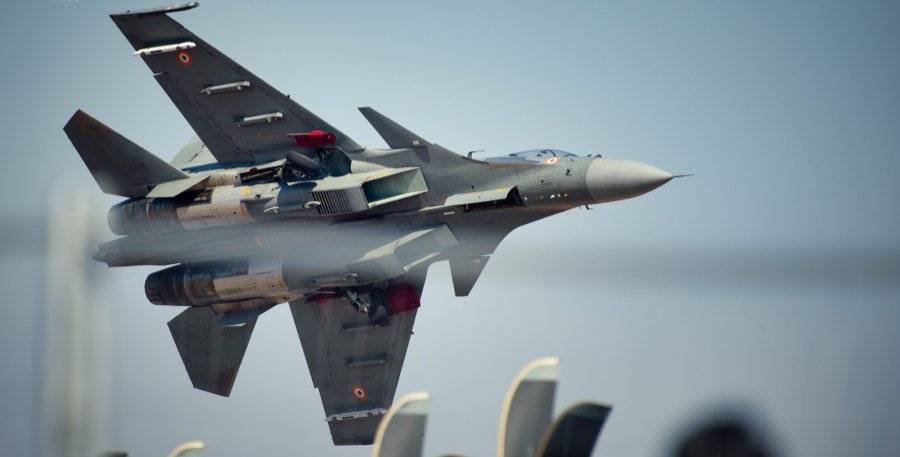There are many different types of aircraft that are used by the Indian Air Force, but the Sukhoi-30 MKI is the one that stands out from the others. The sheer size of this majestic monster makes all of the other fighters seem to be very little.
It is a Frankenstein with avionics and various subsystems originating from various countries such as Russia, France, Israel and India. These systems were cherry picked and seamlessly integrated to ensure that the final product was optimal and state of the art. The MKI is a unique variant of the Sukhoi-30 that was specifically designed to meet the requirements of the Indian Air Force.

In addition to these internal differences, what differentiated MKI from other Su-30 variants was the fact that it was the first Su-30 variant to be fitted with thrust vectoring engines and canards, which are small forewings located ahead of the main wing. These modifications enabled the aircraft, which was already highly maneuverable, to defy the laws of physics.
Due to the fact that the Sukhoi-30 MKI was so remarkable, the Russians made the decision to create a variation known as the Su-30 SM. This variety is comparable to the Indian MKI, with the exception that the European and Israeli electronics were replaced with Russian Systems.
Because of these factors, the Su-30 MKI may also be referred to be the “BACKBONE” of the Indian Air Force, not just in the present day but also into the foreseeable future.
Numbers – The Indian Air Force (IAF) now employs close to 260 aircraft of this kind, and there are plans to buy an additional 12 aircraft in order to compensate for the ones that have been lost over the course of time due to accidents and to account for future attritions during the possibility of crashes. The MKI is responsible for about thirteen squadrons of the frontline fleet of the Indian Air Force. The quantity of these aircraft is a quality that cannot be minimized, despite the fact that there should be no uncertainty about the quality of these aircraft.
This aircraft is capable of flying across large distances and remaining in the air for an extended length of time, making it unparalleled in terms of both its endurance and its payload. Because of its enormous construction, it is able to carry enough gasoline on board that it can remain in the air for around four hours and make it possible for it to go from one end of the nation to the other. This already excellent endurance and range may be further enhanced by carrying more fuel in external fuel tanks that can be installed on its pylons, or by refueling in air from a tanker aircraft or another aircraft that has a buddy refueling system. Both of these options are available.
Additionally, the aircraft is equipped with twelve exterior pylons, and depending on the mission profile, it has the capacity to transport up to eight tons of a variety of weaponry and other goods.It is important to mention that the Indian Air Force (IAF) has participated in operations and cross-continental flights with the Sukhoi-30 MKI, during which the aircraft has remained in the air for close to ten hours.

In spite of the fact that other aircraft in the Indian Air Force, such as the Mirage 2000, are acknowledged to be the ones that are used for air-to-ground operations, the Su-30 MKI has a trump card that no other aircraft does. Brahmos-A is a supersonic cruise missile that weighs 2.5 tons and has the capability to strike both land and naval targets at a range of over 450 kilometers.
The Su-30 MKI is the only aircraft currently in existence that is equipped with this missile. This makes it possible for the Sukhoi-30 MKI to strike crucial or time-sensitive targets deep inside enemy territory or within the Indian Ocean Region (IOR), so preventing the Pakistani and Chinese navy from gaining access when it is required.
Produced in India – A Hindustan Aeronautics Limited (HAL) was the company that was responsible for building the aircraft in India under license, despite the fact that it was a Russian fighter aircraft. Additionally, a significant amount of technology was transferred to HAL, which brought about the capability of HAL to manufacture the aircraft from the material stage inside the nation. Because of this, we have been able to lessen our reliance on the Original Equipment Manufacturer (OEM) for maintenance, overhauls, and even upgrades inside the nation.
This has also made it possible for us to integrate a wide variety of non-OEM sensors and subsystems, including weapons, into the platform with very little to no support from the OEM. For instance, the Indian Astra BVR missile and the European ASRAAM missile, both of which are non-Russian systems, are currently integrated into the platform, and a wide variety of other weapons are still being added to it.
Additionally, the Su 30 MKI serves as a testbed, which is used by DRDO laboratories for the purpose of testing a variety of innovative systems that are currently under development. As an example, the SU 30 MKI is used to test a variety of missiles, including as the Astra air-to-air missile and the Rudram air-to-ground missile, as well as guided and unguided bombs. Additionally, very important equipment like as Self-Protection Jammers, Electronic Warfare (EW) systems and pods, and other similar systems are often tested for the first time on the MKI.
Despite the fact that the original MKI was designed in the early 2000s, it has undergone a number of updates to its avionics and subsystems throughout the course of its existence. These upgrades have enabled the aircraft to continue to be among the most advanced offerings in the area.
Nevertheless, modernization is a process that never comes to an end, and for some time now, there has been a significant upgrade of the fleet that has been informally referred to as “Super Sukhoi.” At one point in time, this update was supposed to be carried out in conjunction with the Russian original equipment manufacturer (OEM). However, the current goal is to replace all of the primary components, including as the outdated radar, EW suite, IRST, and mission computers, with Indian systems that are now in different stages of development and testing. In essence, this will bring the Su-30 MKI up to speed with the most cutting-edge fighter aircraft that are currently in existence.
More on Sukhoi
Sukhoi Su-57 vs F-35 Lightning II The Stealth War


Hello Aviationwallnews,
There is one correction to be made, in the starting paragraph.
Because of these factors, the Su-30 MKI may also be referred to be the “BACKBONE” of the Israeli Air Force, not just in the present day but also into the foreseeable future.
You have mentioned the “BACKBONE” of the Israeli Air Force which should be Indian Air Force.
The Israeli Air Force uses all the systems of USA mainly the F-15 Eagle, F-16 Viper, F-35A to name a few.
There are no issues in the article. It is captivating and informative.
Thanks and Regards,
Harshad Joshi
Thanks Harshad, correction has been made. It was a typo error.